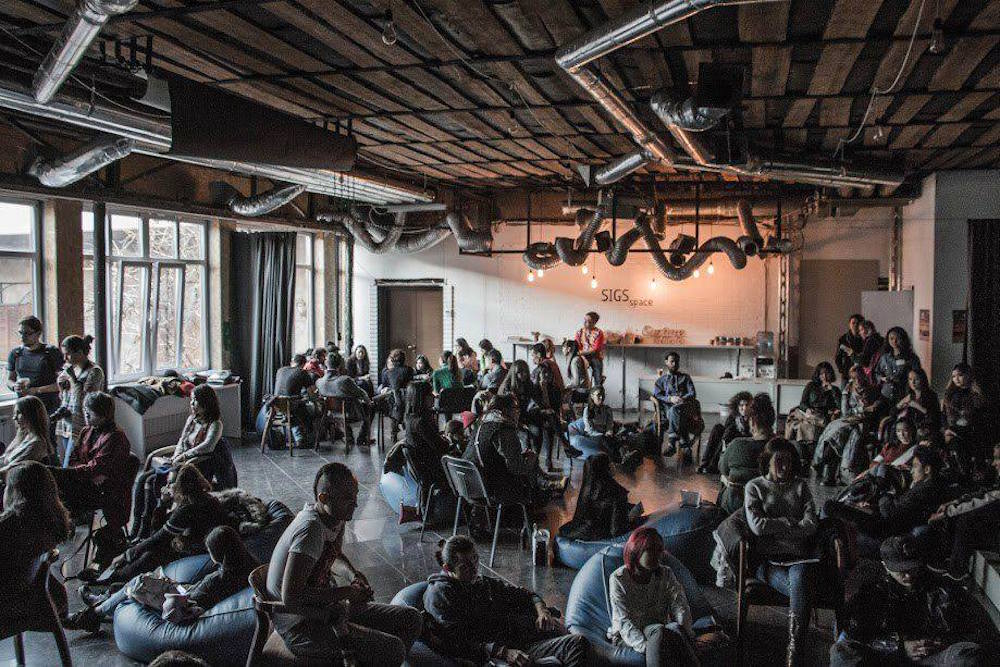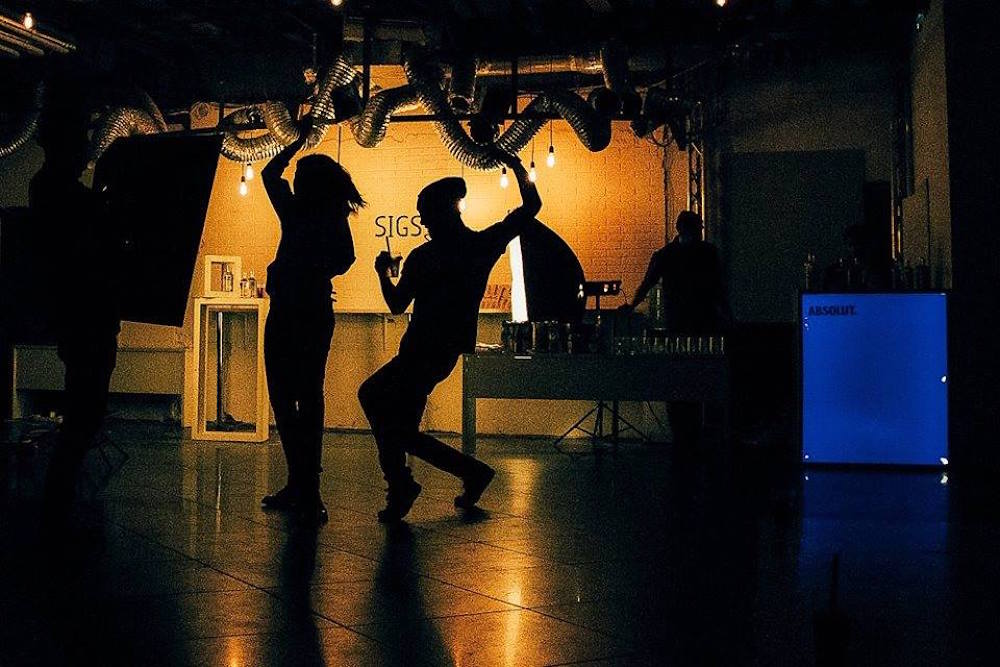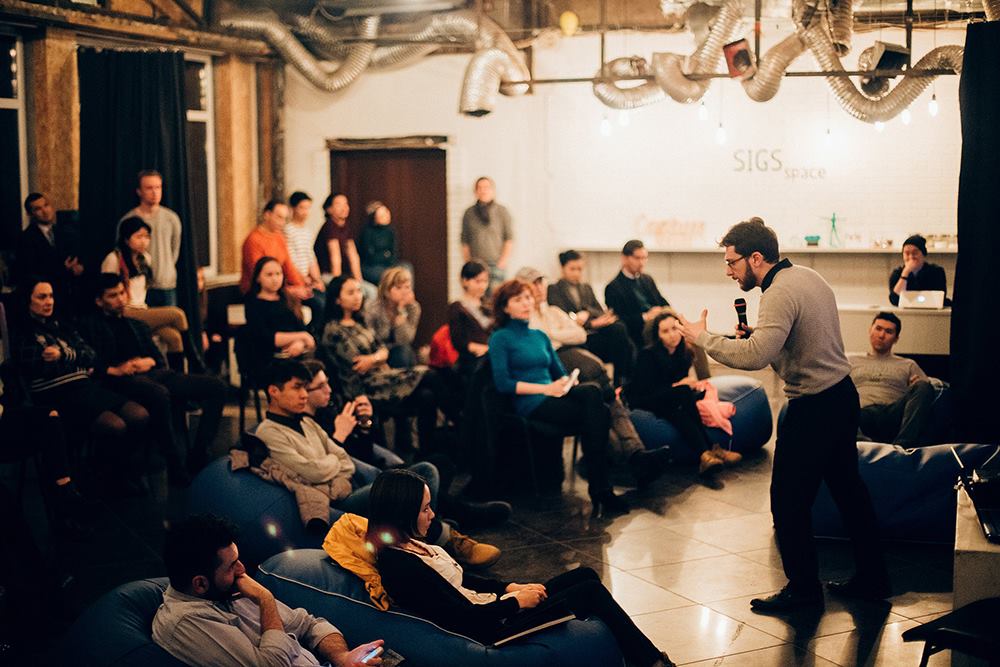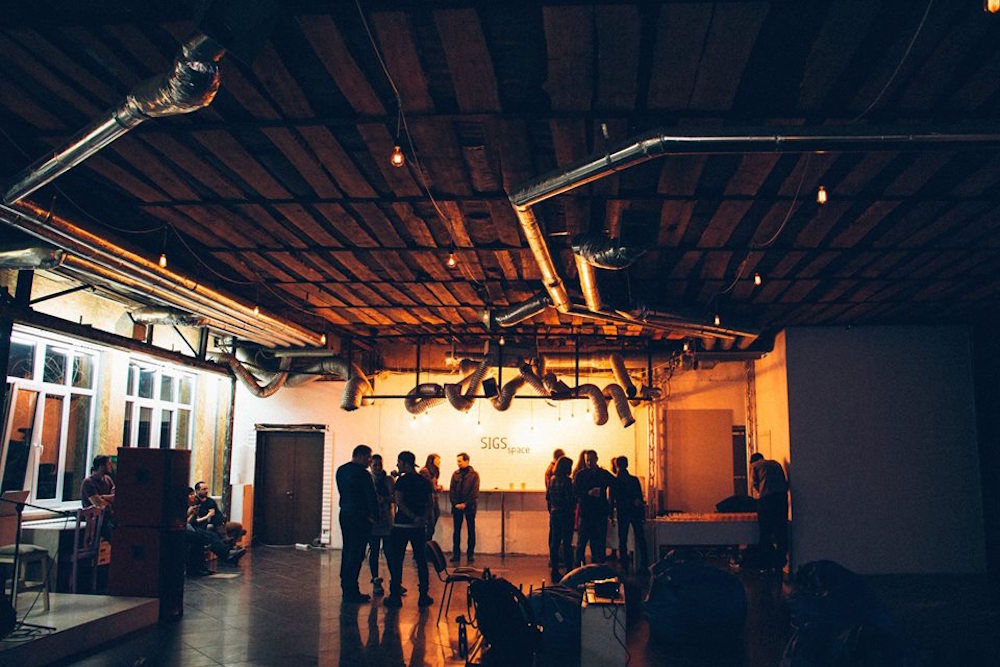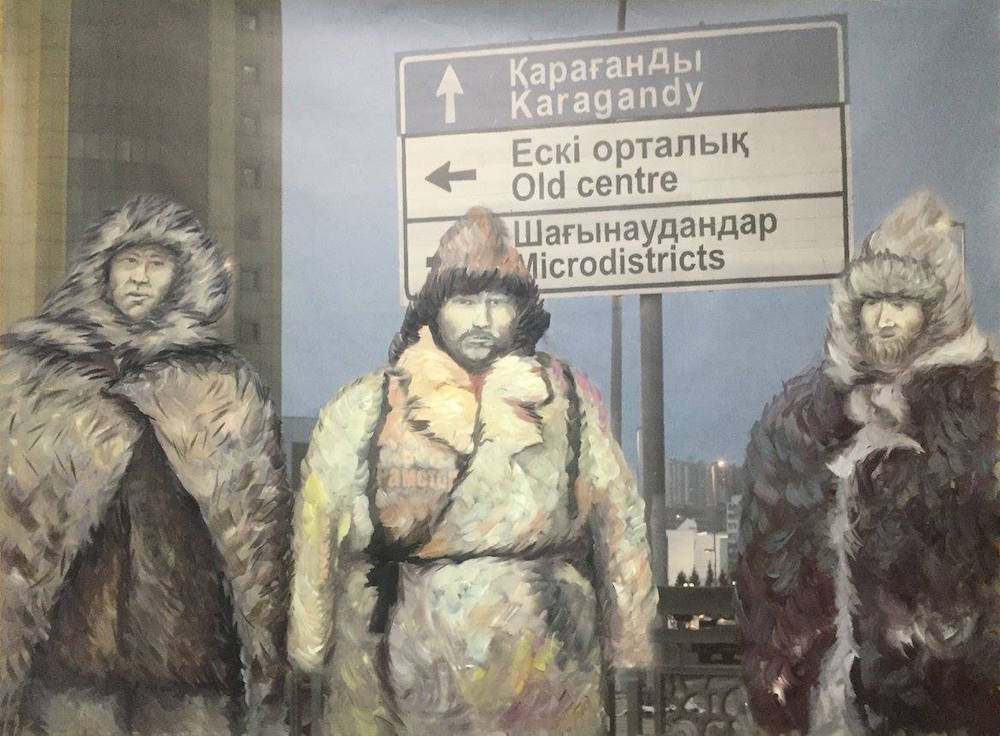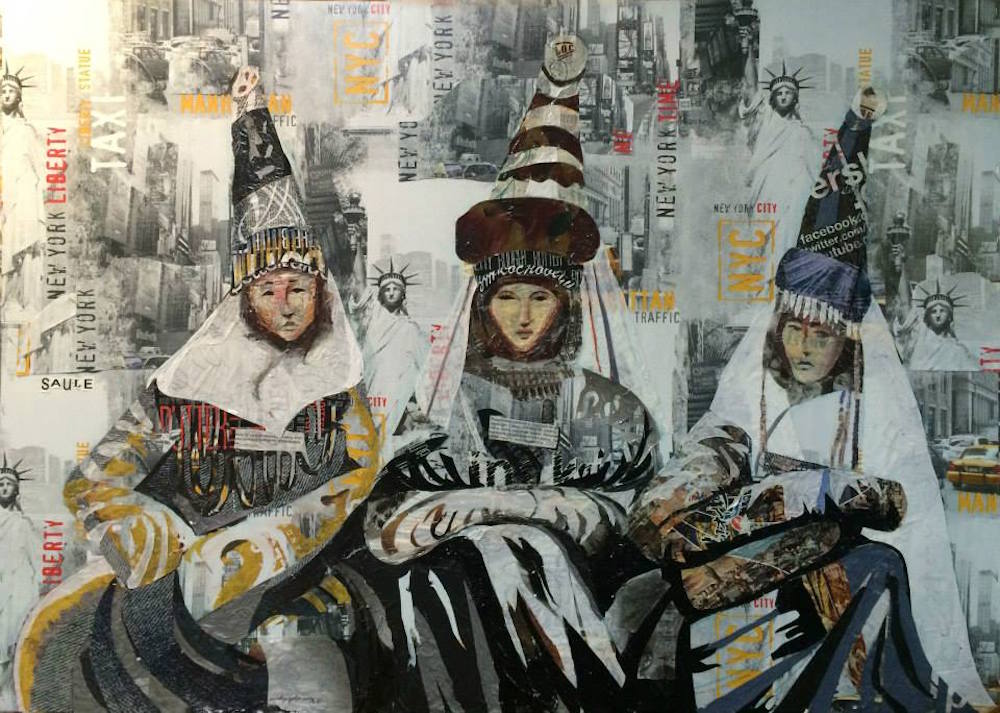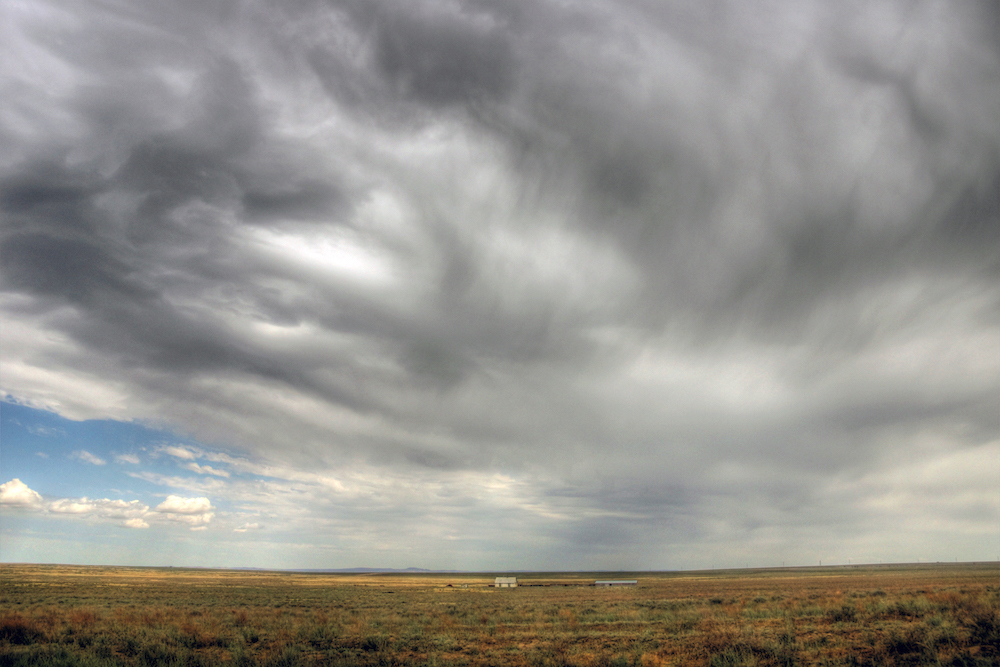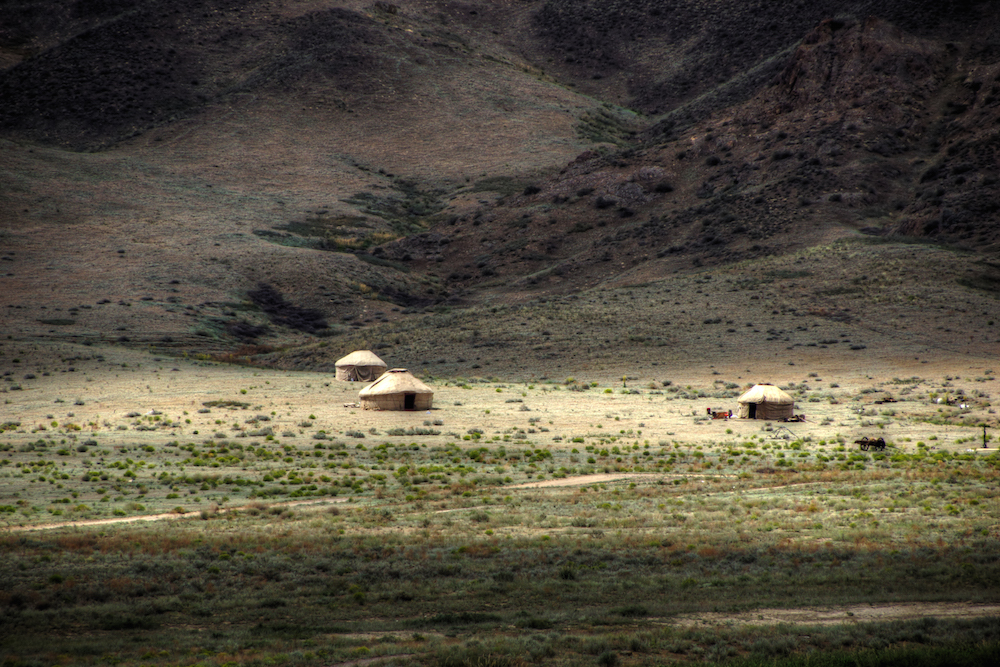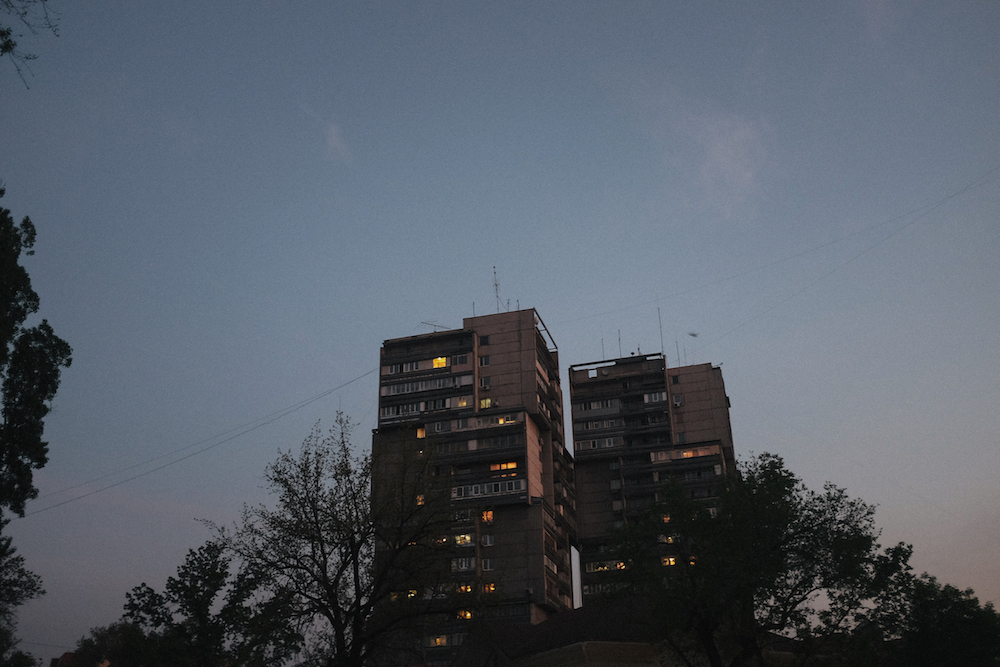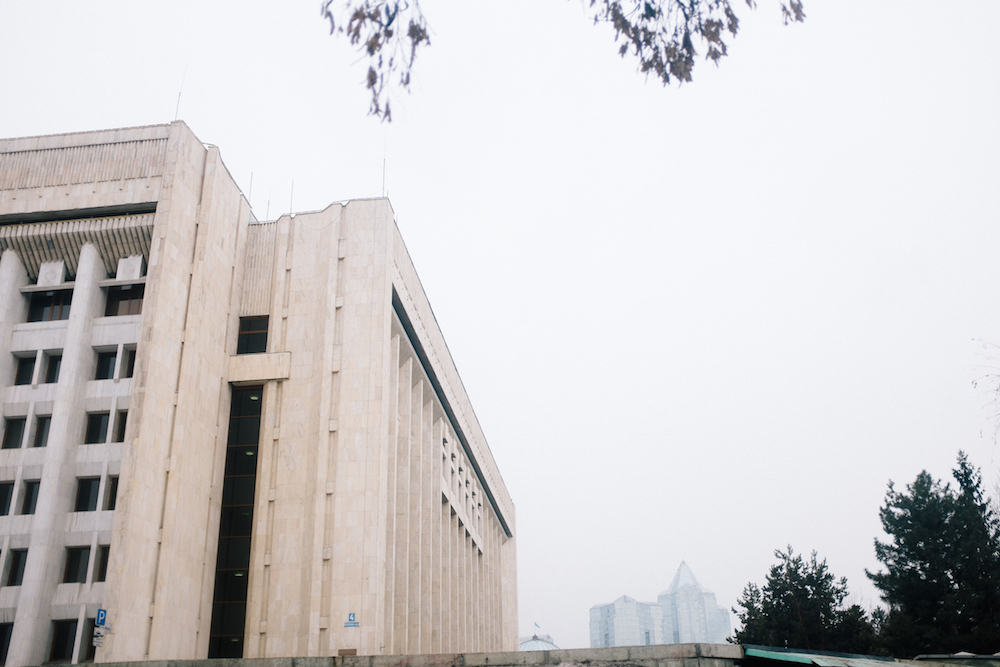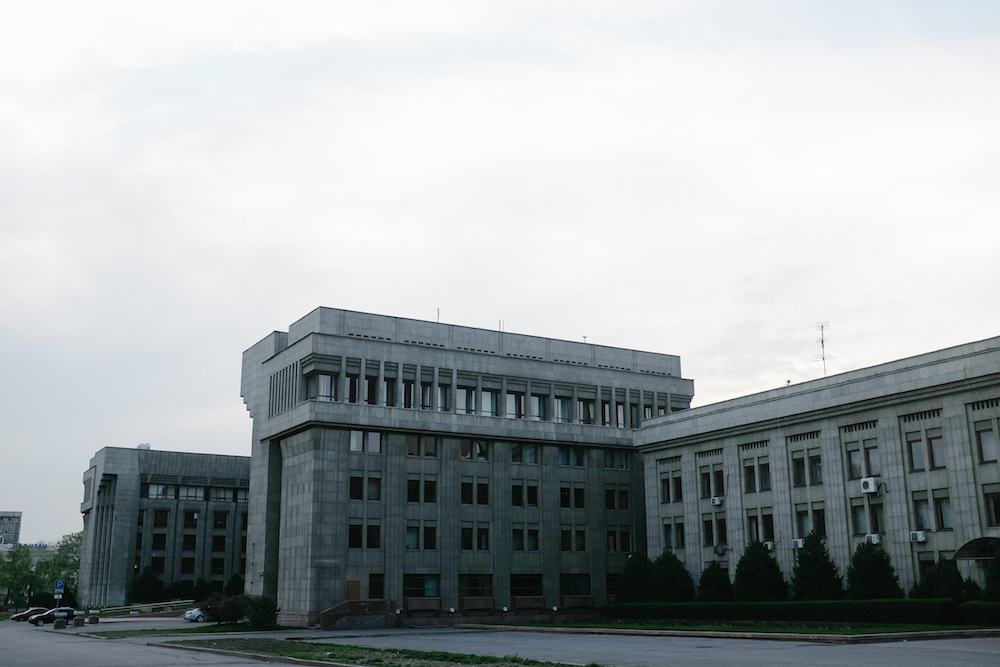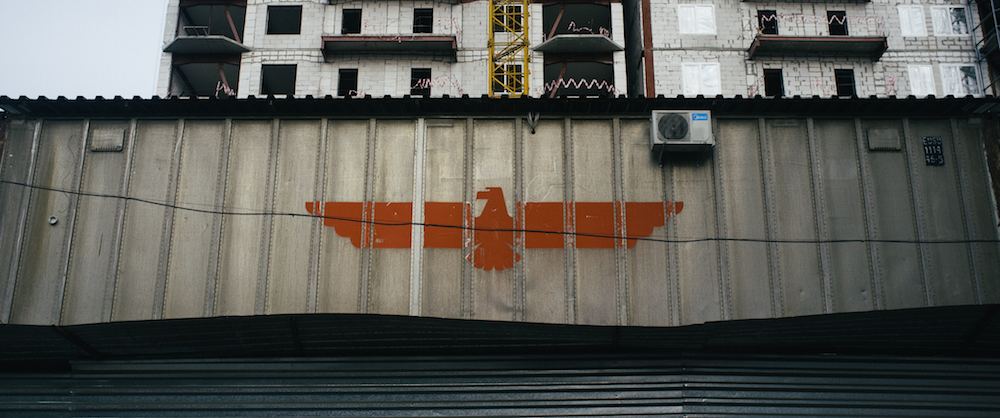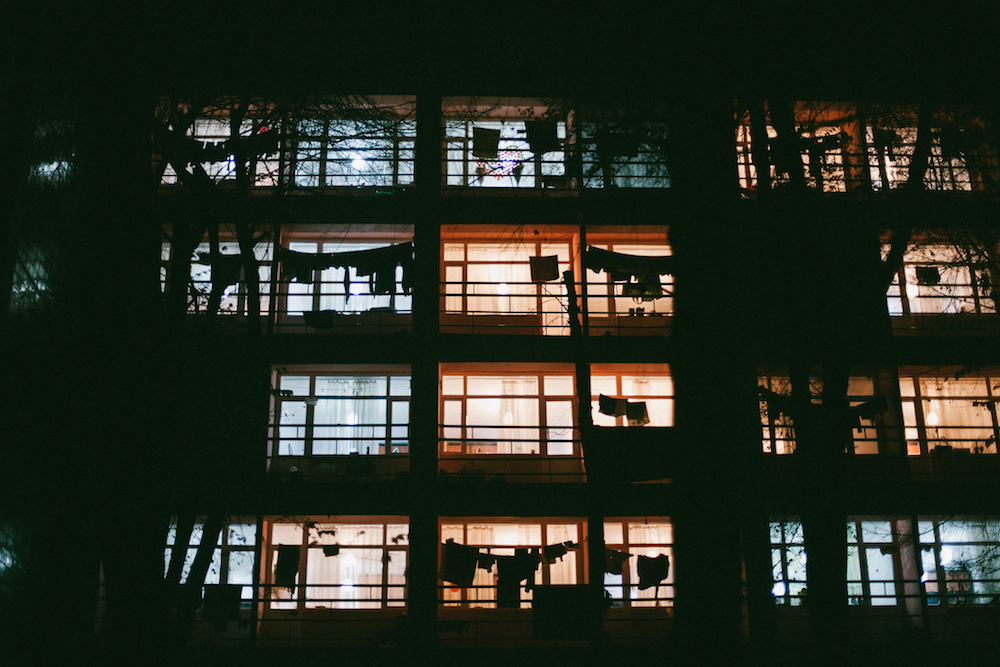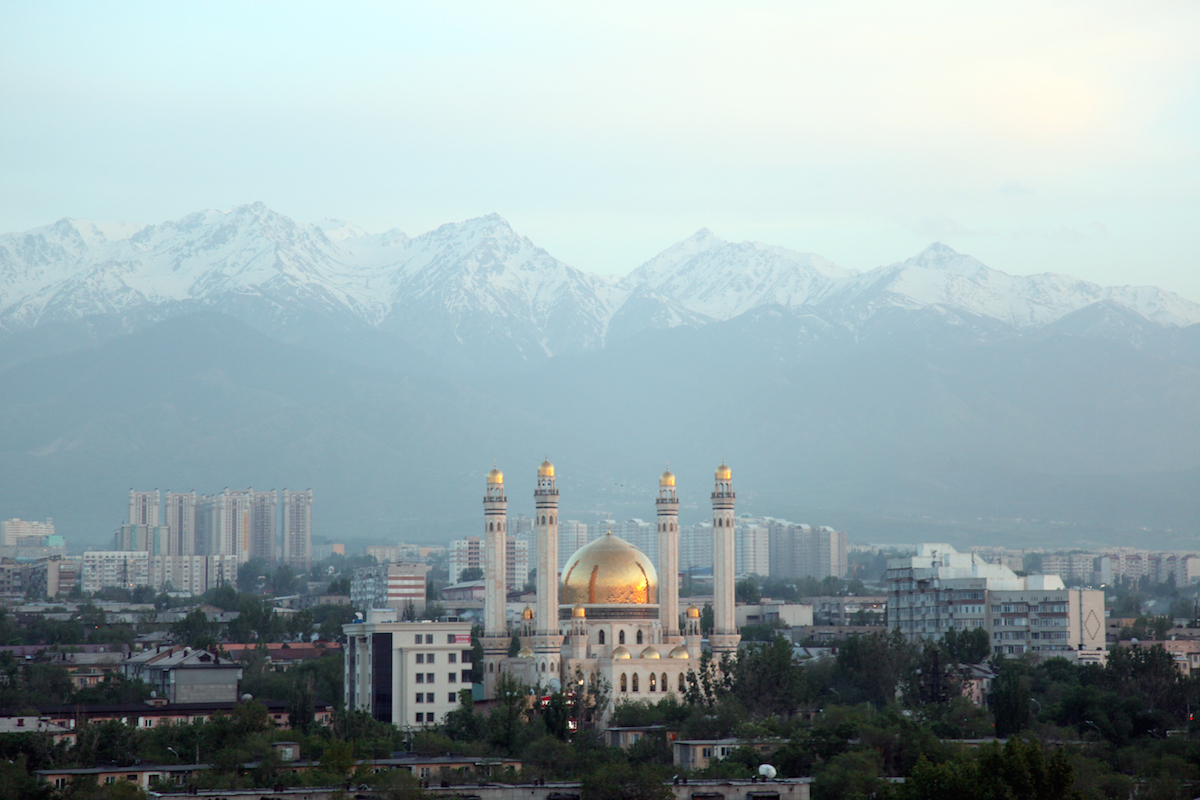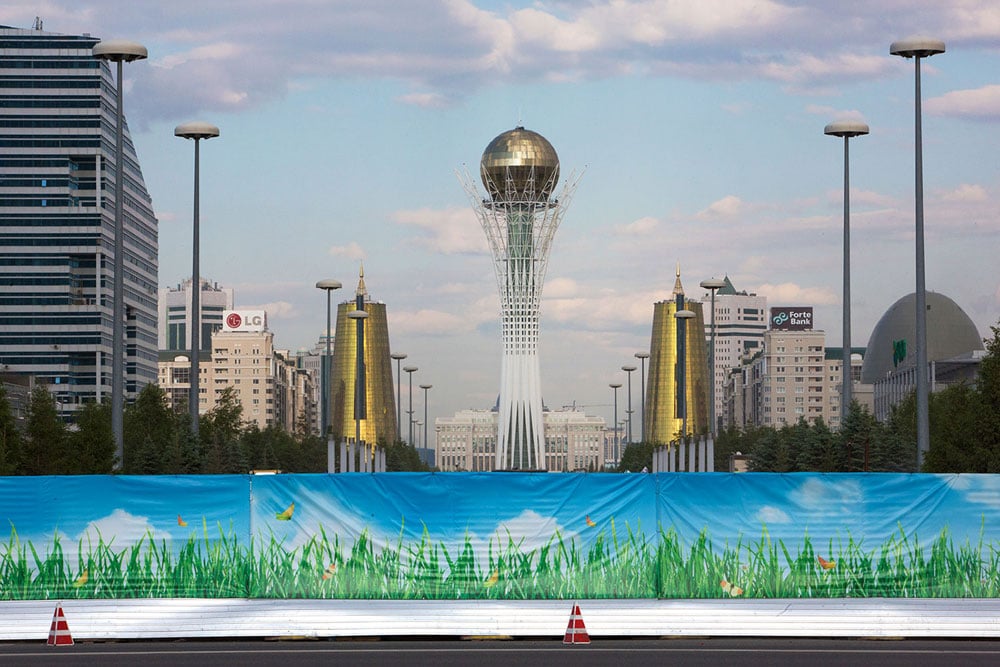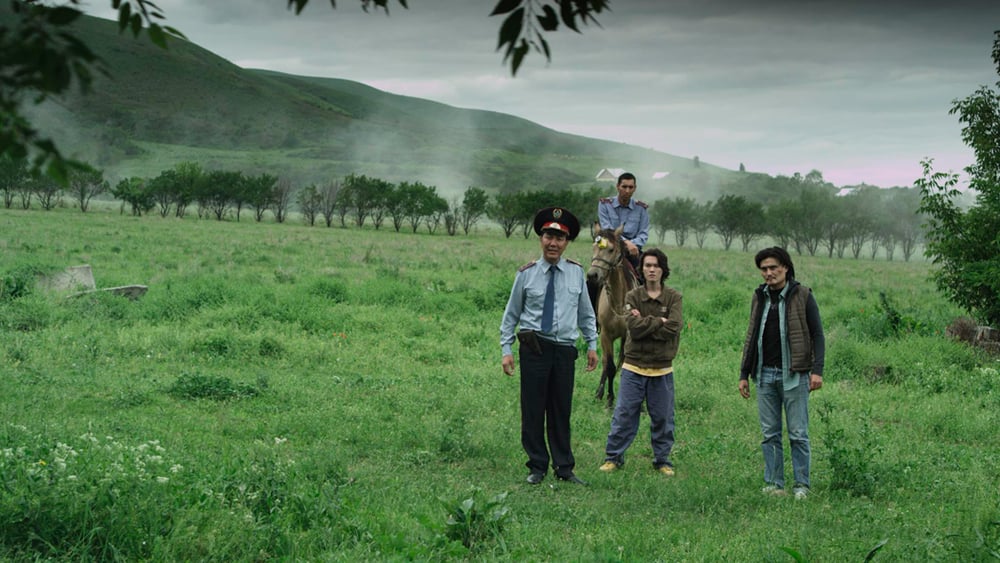Somewhere In the Great Steppe: the artistic space championing openness in Almaty
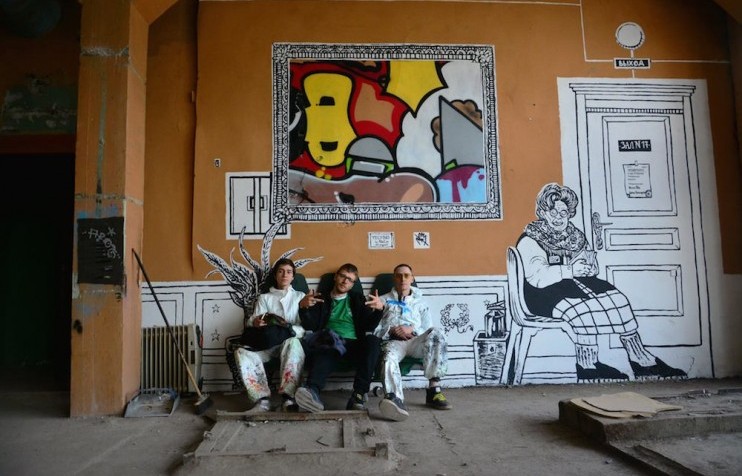
Somewhere In the Great Steppe, or SIGS, is an artistic and cultural centre in Kazakhstan’s former capital Almaty that’s playing host to a new wave of civically engaged and open-minded creatives as well as preserving Kazakh traditions. Valentina Michelotti reports on a welcome new addition to the city’s public life
“Not far from Almaty, once upon a time, the first apple trees in the Universe began to blossom. It’s said that the first tulips also appeared here. It’s possible that, in connection with that, here in Kazakhstan, in Almaty, the origins of SIGS were predestined…”
I’m speaking with Timur Nusimbekov, founder of SIGS, or Somewhere In the Great Steppe: an educational and social outreach project that brings artists, professors, photographers, mountain climbers, social activists, musicians, local heroes and many others to speak, teach and engage with people in Almaty. And certainly nothing I’ve come across in Kazakhstan seems more organic than this little room with its unobtrusive sign hanging lopsided in bar Chukotka, the riotous epicentre of the otherwise complacent Park Panfilova. Through that quiet door a spacious room, dotted with beanbags, exposed brick and a strange, superficial system of tubing on the ceiling give off the unmistakeable (read: ubiquitously marketed) feel of what one imagines to be a Brooklyn coffee shop or a Berlin basement. Almaty sun streams in from windows overlooking a garden, dust particles swirl, and the space is saturated with the frustratingly indefinable energy of an important happening I just missed.
“The idea of SIGS first appeared in the summer of 2015 in New York,” Nusimbekov explains. “By the time the first snowflakes were falling on Almaty that winter, we had opened. We’ve hosted more than 150 different events — poetry nights, acoustic concerts, experimental theatre productions, lectures on freedom (and slavery), lessons in citizenry. We’ve had speakers from over 20 countries in Europe, Asia and the USA. And most importantly, all of this happens for free.”
At the first SIGS event I attended I heard a woman speak on higher education management, an activist call out a man pontificating on feminism, a traditionalist rap about faith. The socially responsible crowd in Almaty is not born in SIGS, but one would be hard-pressed to find an artist, professor or activist from Almaty who hasn’t taken to its stage. I’ve seen amateur mountain climbers describe their ascent of Mount Elbrus; recently the local artist Saule Suleimenova presented her work in the space, lining the walls with depictions of modern Kazakh life — plastic bags, rusted metal, wood, and the ancient history of the steppe. Environmental and social activist Asya Tulesova — famed for creating an app to chart Almaty’s infamous smog, which was immediately shut down for decrying the lack of concrete action against pollution, pushing her to run for local government — has also appeared. So has the prodigious political artist Pasha Cas, whose works stand on the sides of buildings as solemn testament to social injustices.
SIGS provides a platform for the development and discussion of culture not altogether common to Central Asia. Beanbags and brick distract the foreign gaze, not used to seeing “places like this” in Kazakhstan, from the real wonder of SIGS. To adopt the tired Western viewpoint and contextualise SIGS’s existence by virtue of its uniqueness would be to neglect the magic of the space. Cultural identity is the conversation du jour in Kazakhstan, where post-colonial discourse, Oriental mysticism, post-Soviet identity politics and extremist paranoia come to a frothy head.
I ask Nusimbekov whether he considers SIGS an example of Kazakh counterculture. “In the centre of Eurasia, in post-Soviet societies and especially in Central Asian countries [counterculture] means something entirely different than in the UK or the US. Even 26 years after 1991, the collective unconsciousness of post-Soviet society is under the control of the ghosts of Bolsheviks past: Stalin, Dzerzhinsky and other totalitarian Satans.” It is not the case, though, that the current repressive government is solely to blame. “We’re located in such a paradoxical time and place that even the idea of “culture” itself is still half-baked. Moreover, as all previous cultures that existed in this space were either destroyed or marginalised, I see neither cause nor grounds yet for the development of a “counter” culture. Of course our society has its free spirits, protest kids, punks and post-Dadaists, but that’s just self-improvement — not the type of movement that inspires subcultures.
Cultural identity is the conversation du jour in Kazakhstan, where post-colonial discourse, Oriental mysticism, post-Soviet identity politics and extremist paranoia come to a frothy head
The real wonder is not that SIGS has created a platform for cultural discussion in Central Asia. In its conception SIGS is a particularly Kazakh — or, perhaps, particularly “Steppe” space. Kazakhstan is the size of Europe, with a population equivalent to that of the Netherlands. How people have related to empty space and the immensity of the Kazakh steppe throughout history has directly contributed to their view of themselves and the rest of the world. This kind of intimate knowledge of your own insignificance shapes your self-understanding; in Kazakhstan, it acts as one of the few uniting factors in an otherwise diverse, often oppositional, pool of cultural histories.
As a Central Asian open forum, existing for the promotion of discussion, argument, and engagement, SIGS recognises the distinctive role that conceptions of physical space play in the history and civilization of the steppe, and embraces the resulting diversity — in the name of both being here and moving forward. It is not a space only for Kazakhs, or Kazakhstanis. It is not a Russian, English or Kazakh-only speaking space, dictated by no one ideology or populated by no one majority. When space dictates presence, it’s not why you came, but that you’re there at all. SIGS is not only a reflection of Almaty’s urban youth culture, but a spatial realisation of the mixed and mingled (and sometimes mangled) human history of the steppe.
What does the future hold for a space like SIGS? Nusimbekov is clear that the relationships and exchanges between people will always be at the heart of the project. “The combination of the street, the bar, the park — not to mention the address itself — are the makings of a postmodern poem, or a psychedelic trip. All types of people visit the space, but what’s most important for me is not who we are when we come to it, but who we are when we leave. That’s the most interesting part — the moment of transition, change, alteration — and the most important.”
One night, at a research presentation I saw Nusimbekov, slinking through the audience with a camera. He was grinning like the Cheshire Cat, drinking in the atmosphere and revelling in the exchange of information. Suddenly I remembered that I had been here before. On a hazy Friday night earlier that year my friend and I were searching for a moment away from the drunken revelry of Chukotka and stumbled into SIGS. All the beanbags had been piled into a corner where a few people were murmuring, and there were a few more people moving, making great leaps and pirouetting about the space. I was afraid to interrupt the space, so I turned to leave, but never left. We talked about the philosophy of resistance and danced until the birds started chirping, signalling the end of the moment just as it had begun.
